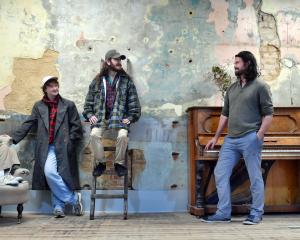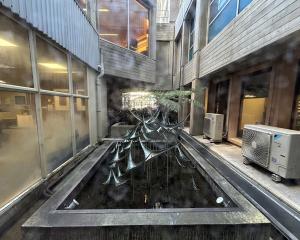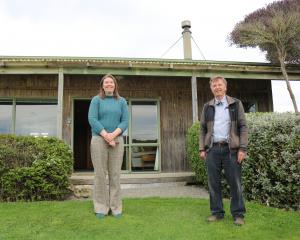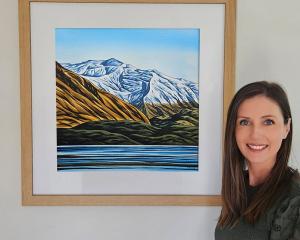In this week's Art Seen, Robyn Maree Pickens looks at exhibitions at Dunedin School of Art Gallery, Brett McDowell Gallery, and Mint Gallery.

To coincide with the centenary of the 1917 Russian Revolution, Peter Stupples has curated an exhibition titled Art and Revolution. Given the role that flags continue to play in protest and uprisings, it is fitting that there are two flag works: one (comprising three flags) by Neil Emmerson, and one by Christine Keller titled Raising the Red Flag (2017). Some works, like Keller’s, are linked to community-based projects centred around sustainable living and ecological issues. The flag Keller raises each day of the exhibition is one of her hand-woven tea towels. Ecological themes are also evident in the (multi-authored) work of Pam McKinlay, Jesse-James Pickery and Emily Davidson. An installation, this multi-authored work combines vines, up-cycled plastic, raku fired ceramics, sound, and "sneaky electronics" that periodically release beans from the ceiling.
Art and Revolution includes well-known artists such as Nigel Brown in his trademark figurative style and a cluster of photographs, objects and documentation by Barry Thomas. Thomas’ 1978 act of planting cabbages in a central Wellington vacant lot to spell "CABBAGES" is documented by a polaroid that shows the success of the renegade crop. Art and Revolution is a large-scale group exhibition that manages to more or less avoid the feel of commodification, which is not only appropriate given the subject, but an increasingly rare experience.

Do high school students still write notes in class? Judging by the current exhibition at Brett McDowell Gallery, the answer is yes. But then Brett McDowell has been collecting these scraps of paper for the past 10 years. That is, over the past decade he has bent down to pick up folded, scrunched-up, torn pieces of notepaper, A4 refill and post-its. These notes have been discarded, dropped, or lost. Each note is a small field of emotion, a state of being, or a communicative act that ranges from heartfelt concern over a friend to strange incantations addressing a calculator. In between this range are reading lists, ball season lists and budgets, bored-in-class notes, drawings, reminders and short aphoristic phrases. There is the student persecuted for ginger hair, someone trying to salvage a relationship, a multi-authored letter of praise for a departing senior student. McDowell has taken care to protect the identity of author and addressee by painstakingly cutting out small pieces of black card and pinning them over all names. Some notes have more black rectangles than others, but by protecting the praised and the maligned in this manner, McDowell has created a leitmotif that lends additional formal coherence to the exhibition. High School Notes is a short-lived exhibition that runs until October 27, so don’t delay. NB: there are also some notes from parents.

When considering why I was ready to describe Samantha Matthew’s exhibition of nine photographic works as "pared back", I found that adjectival phrase applied not just to the number of works (nine), and the means of display (unframed), but also to the subject. The title of the exhibition, "Lambhill", is a direct reference to an old farm homestead outside of Whanganui where Matthews’ family farm is also located. "Lambhill" is Matthews’ subject, specifically the careworn interiors of the homestead like the patterns of water stains and exposed scrim and sarking walls. Here the very walls are pared back to their substrate of timber, hessian sacking and old fragments of newspaper.
Despite the dilapidated state of the homestead’s interior this suite of photographs does not feel like an invocation or celebration of the abject, nor of faded glory, or a heroic colonial past. There are quiet moments where the accretion of time, including the recent past, is evident in multiple kete hanging on a hook. Shelves of crockery, a map on the back of a door, and a postcard propped above a wall-mounted telephone lend touches of colour to an otherwise pared back palette. While some objects, such as the telephone in one photograph, are highlighted by Matthews’ framing, her eye is not primarily ethnographic, but roves between memory, the historical, and visual patterns.













